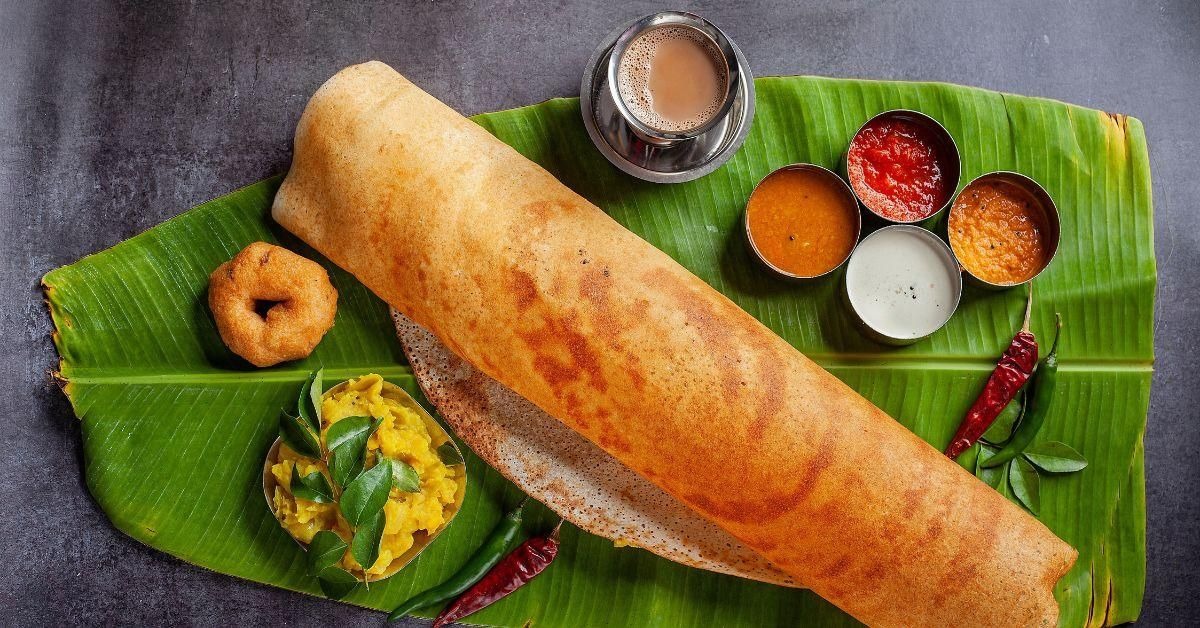The iconic culinary pairing of dosa and dal dates back thousands of years in South India, combining a fermented rice and urad dal crepe with spiced lentil stew. This combination not only delights the palate but balances nutrition, culture, and tradition, symbolizing the rich heritage of Indian gastronomy.
Dosa, the golden crispy crepe made from fermented rice and urad dal (black gram), is an age-old staple of South Indian cuisine. Its story stretches back over 1,500 years, with references found in ancient Tamil literature like the Sangam era and classical texts such as Silappatikaram.
Initially, dosa was a humble, thick pancake, soft and fluffy, evolving into the thinner, crispier form popularized in Karnataka’s Udupi region. The key ingredients—rice and dal—are soaked, ground, and fermented to yield a batter that balances flavor, texture, and digestibility. Fermentation breaks down starch, enhances nutrition, and imparts a subtle tang that makes dosa uniquely appetizing.
Dal, especially in the form of sambar—a spicy, tangy lentil and vegetable stew—is the perfect partner to dosa. This pairing is a classic example of culinary harmony where the mild and crispy dosa complements the robust, spiced flavors of dal. Beyond taste, it provides a wholesome balance of proteins, carbohydrates, vitamins, and minerals, affirming ancient wisdom that food is medicine.
The ritual of eating dosa with dal has cultural significance, reflecting hospitality, celebration, and shared joy. Traditionally served with coconut chutney and sambar, dosa meals are often associated with festivals, special occasions, and everyday comfort.
Over centuries, dosa and dal have embraced variations—masala dosa, rava dosa, and different regional sambar recipes—reflecting local tastes and innovations, yet maintaining the fundamental bond of rice and lentils. This culinary duo is now enjoyed worldwide, transcending borders as a symbol of Indian identity.
Notable Updates:
-
Dosa’s origin is traced to ancient Tamil Nadu, with literary mentions dating back 1,500+ years.
-
The dosa batter’s fermentation process enhances its flavor and nutritional value.
-
Dal-based sambar offers spice, nutrition, and moisture, perfect for pairing with crispy dosa.
-
This combination typifies Indian philosophies of balance and nourishment in cuisine.
-
Regional adaptations preserve originality while offering new tastes (masala dosa, rava dosa).
-
Worldwide popularity illustrates dosa and dal’s timeless appeal and cultural resonance.
-
Traditional accompaniments like coconut chutney enrich the flavor and texture experience.
-
Beyond the plate, dosa and dal represent hospitality, community, and the art of sharing.
When dosa and dal crossed paths, they created not just a meal but a cultural icon that continues to warm hearts and satisfy appetites globally.
Sources: Wikipedia, Swiggy Blog, Times of India, Lemonsoon Blog








